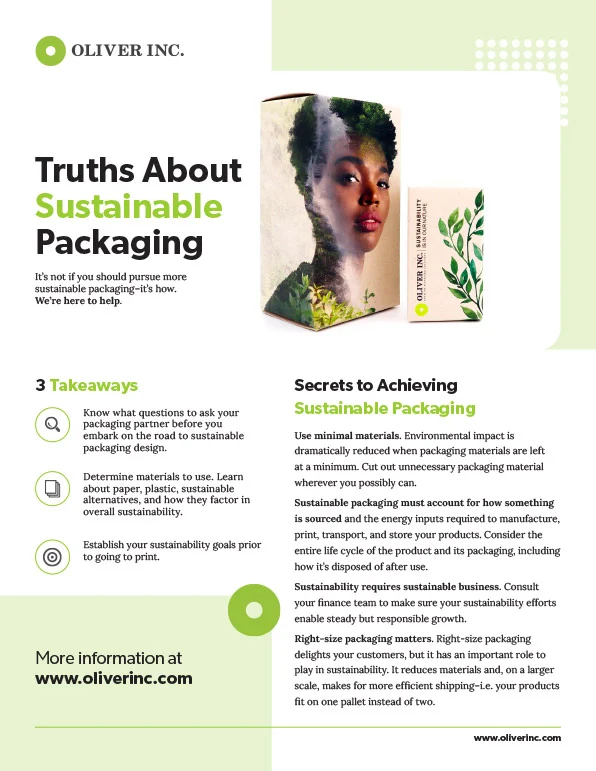What Are the Advantages of Blister Card Packaging?
Posted by Oliver Inc. on 7th Oct 2025
Blister card packaging is one of those things you’ve probably seen a thousand times but never really thought about. It’s the type of packaging where the product sits inside a clear, molded plastic pocket (the “blister”) that’s sealed to a printed card.
Blister card packaging is ubiquitous, used to package everything from small electronics and batteries to over-the-counter medicines and toys. But why is it so popular? Read on below for the many benefits it offers for both manufacturers and consumers:
Keeps Products Protected and Fresh
Protection is one of the most obvious benefits of blister card packaging. The sturdy plastic shell shields the product from dust, moisture, and other environmental factors. It can even help extend shelf life for items like medications or food supplements by keeping them sealed until the moment that they’re opened.
For fragile products, blister card packaging also acts like a miniature safety bubble that reduces the risk of damage during shipping or handling. This means that what a customer buys is more likely to reach them in perfect condition.
Perfect for Showcasing Products
The blister in blister card packaging – the clear plastic part – allows customers to see exactly what they’re getting without ever having to open the package up. This makes it perfect for products that you want to showcase – and it builds trust, as there’s no need for the buyer to guess the item’s size, color, or quality.
On top of that, the printed card can be designed with bold colors, logos, and information that help the product stand out on the shelf. It’s like having both a display case and a mini billboard in one.
Tamper-Evident for Safety
No one wants to buy a product that’s been messed with. Blister card packaging comes sealed in a way that makes tampering obvious. If someone tries to open the product before it’s purchased, it’s noticeable right away.
This is especially important for pharmaceuticals, medical devices, and food products, where safety is non-negotiable. For manufacturers, this helps build customer confidence. For shoppers, it’s that extra reassurance that what they’re buying is safe and untouched.
Easy to Store and Display
Another reason why retailers love blister card packaging is because it’s easy to store, stack, and display. The flat backing allows products to be hung on peg hooks or placed neatly in bins. This makes it easier for stores to manage inventory and for customers to browse without digging through piles of boxes.
Even at home, the slim profile of blister-packed items takes up less space in drawers or cabinets, making storage simple.
Lightweight Yet Durable
Blister card packaging is tough, but it’s not heavy. Not only does this reduce shipping costs, but it also helps minimize a brand’s environmental footprint. The materials used are usually lightweight plastics combined with cardboard, which means less bulk and lower transportation expenses.
At the same time, the design is strong enough to protect what’s inside from everyday bumps and jostles. This balance between strength and lightness is one of the reasons the packaging is so widely used.
Customizable for Different Products
The flexibility of blister card packaging is yet another thing it’s got going for it. It can be tailored to fit almost any product shape or size. Whether it’s a set of batteries, a toothbrush, or a collectible toy, the blister can be molded to hold it snugly in place.
The printed card backing can also be customized with branding, instructions, barcodes, or promotional offers. This level of customization makes it easy for brands to create a cohesive look across their product line while still catering to specific packaging needs.
Cost-Effective for Manufacturers
For businesses, blister card packaging often works out to be an affordable choice. The materials are relatively inexpensive, and the production process can be scaled up efficiently. Additionally, because the packaging is lightweight, shipping costs are lower compared to heavier alternatives.
When you combine protection, branding opportunities, and cost savings, it’s easy to see why so many companies stick with this format.
(For Pharmaceuticals) Convenience and Dosage Control
For medications, blister packs with individual compartments make it easy for consumers to track their dosage and medication schedules. This can help improve patient compliance and reduce the risk of accidental under- or overdosing. The compact and lightweight design of blister packs also makes them convenient for storage and travel.
Partner with Oliver Inc. Today to Create Blister Card Packaging for Your Products
Choosing Oliver Inc. means partnering with a company that is backed by 250 years of experience and counting in the ever-changing printing and packaging industry. With multiple production facilities located in Ohio, California, Massachusetts, Virginia, and New York, we can help you get your products to market faster. Contact us today to get started!






